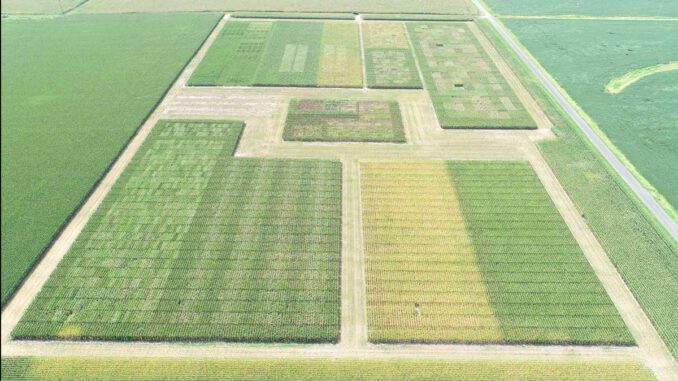
How Microbes Can Help Solve the World’s Fertilizer Problems
Companies are closing in on some promising solutions in the hunt for greener plant foods.
New Fertilizer Technology | Elizabeth Elkin |
IMAGE: Bayer Corp, Field Trials
Farmers depend on synthetic fertilizers to deliver the high crop yields required to meet global food demand, but that comes at a cost to the environment. Much fertilizer production relies on natural gas or coal, accounting for just over 2% of the world’s climate-warming emissions, and chemical fertilizers contribute to agricultural runoffthat damages wildlife. For growers, fertilizer costs can also be wildly unpredictable, because prices are based on the availability of commodities including nitrogen, phosphorous, potassium and gas.
All this has spurred a hunt for alternatives to mineral fertilizers that’s starting to achieve results. Agribusiness heavyweights including Bayer, Corteva and Archer-Daniels-Midland and a crop of startups are closing in on some solutions to reduce the use of conventional fertilizers, including turning to microbes, recycled organic waste and other lower-emission and chemical-free substitutes.
The industry’s resolve has been strengthened by Russia’s invasion of Ukraine, which cut off almost a fifth of the world’s fertilizer exports for part of last year and also crimped gas supplies, causing US fertilizer prices to hit a record last March. While prices have fallen over the past few months, the benchmark North American index is still 80% higher than it was three years ago. “The recent instability has really clarified our focus on what solutions we can come out with now,” says Kelly Gillespie, Bayer AG’s vice president for digital ecosystem services.
Bayer is backing startups that are tapping into the ability of microbes to help plants access naturally occurring nutrients from their environment. Among those is Sound Agriculture Co., an Emeryville, California, company that makes stimulants for microbes. Its product, called Source, helps microbes harness more atmospheric nitrogen and convert it into a usable form for plants and also break down phosphate in the soil. Sound’s marketing materials say Source is “like caffeine for microbes.”
When Source is used alongside a traditional fertilizer, it boosts crop yield, and the additive can replace as much as 30% of the synthetic nitrogen a farmer would typically use without reducing output, says Chief Executive Officer Adam Litle. “It does things like make the roots bigger and longer.”
For 56-year-old Bob Pawlowski, who grows corn, soy and wheat on 1,600 acres in Verona, New York, the soaring cost of mineral fertilizers spurred a foray into the world of microbes. He saw prices of nitrogen, the most important additive for his corn, nearly double in 2022. By spending $13,250 on Source last year, he was able to reduce his annual fertilizer expenses by $64,655, or 30%, and also got a boost to his yield. Pawlowski says he expects more growers to start looking closely into fertilizer alternatives. “Everybody’s trying to find ways to save a little bit more in farming.”
Investment in the space is part of a wider push in agricultural technology. Venture capitalists injected $10.5 billion into ag-tech in 2021, a 58% increase from 2020, and 2023 is likely to see record funding directed at commercializing more ag-tech, according to PitchBook.
Seed and crop protection giant Corteva Inc. says its powder product called Utrisha N improves nitrogen use by helping plants fix nitrogen from the air and convert it into ammonia, a form of nitrogen they can use. Archer-Daniels-Midland Co., a major agricultural trading house, is working to develop a product that doesn’t require chemical processing and has a lower carbon footprint than conventional fertilizers. And Oslo-based Yara International ASAturns organic waste into fertilizer and plans to start making fertilizer using hydropower to cut emissions by 90% versus products made with gas.
A hurdle for anyone peddling fertilizer alternatives will be persuading farmers to switch from the reliable products they’ve used for decades. Ben Riensche, who farms 14,000 acres in Iowa, says he tries one or two fertilizer substitutes a year in small patches, but he hasn’t had success with any. “Some of them are just really terrible,” he says.
As more companies work to find solutions for climate problems and more money is thrown at the issue, however, there’s reason to be optimistic, says Kirk Haney, a managing partner at Radicle Growth, a venture capital fund based in San Diego that invests in ag-tech. “Technology’s going to result in producing more food or more calories of nutrition,” Haney says, “with fewer inputs and reduced environmental impact.”
Original Article: https://www.bloomberg.com/news/articles/2023-01-20/how-microbes-can-help-solve-the-world-s-fertilizer-problems
